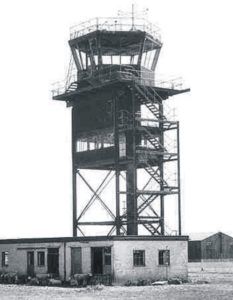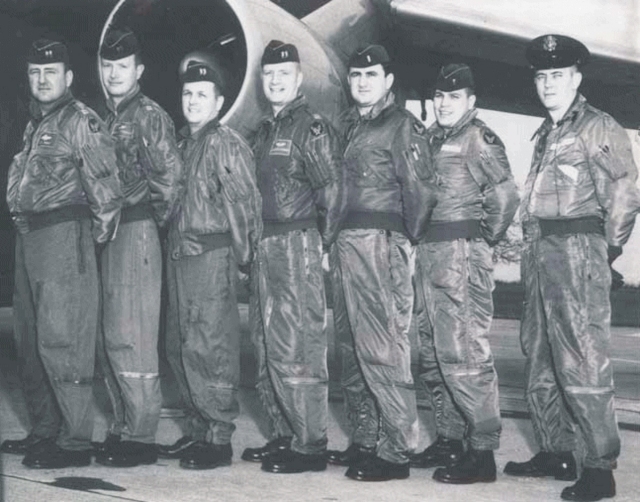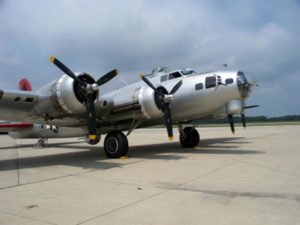Chelveston Aerodrome was originally opened in August 1941 by the Air Ministry for use as a wartime RAF base. The site was large enough to accommodate three runways, which were laid out in the then standard RAF triangular format. However, RAF Chelveston, known as Station 105, was used by the American Army Air Force (USAAF) from 6th December 1942 until 25th July 1945, for bomber operations over German occupied Europe. The airfield was in use by the 301st and then the 305th Bombardment Groups who flew the four engine Boeing B-17 Flying Fortress heavy bomber.


At the end of hostilities, the airfield was briefly used as a satellite station for the 25 Maintenance Unit (MU). However, with the onset of the Cold War and the need for an American military presence to compliment other allied forces, the USAF Strategic Air Command took over the airfield in December 1952. They extended the main runway to accommodate the larger and more powerful jet engine bombers.

Originally, Boeing B-47 Stratojets flew out of the airfield. These were then replaced by the RB-66 Destroyers of the 42nd Tactical Reconnaissance Squadron (10th Tactical Reconnaissance Wing) who arrived in August 1959. In August 1962 the squadron left the airfield during what was known as Operation Clearwater, and the base was retained as a reserved airfield.
Since then, the US military have maintained a small presence on the site using part of it as a communications centre. The long runway has been broken up and removed as has much of the rest of the base infrastructure. Since 1978, the majority of the site was occupied by the 81 Signals Unit who established a mast farm at the site. These masts have recently been removed although their concrete bases, anchor points and security fence remain on the site. The site was sold by the Ministry of Defence in 2005.


Chelveston Aerodrome was originally opened in August 1941 by the Air Ministry for use as a wartime RAF base. The site was large enough to accommodate three runways, which were laid out in the then standard RAF triangular format. However, RAF Chelveston, known as Station 105, was used by the American Army Air Force (USAAF) from 6th December 1942 until 25th July 1945, for bomber operations over German occupied Europe. The airfield was in use by the 301st and then the 305th Bombardment Groups who flew the four engine Boeing B-17 Flying Fortress heavy bomber.

At the end of hostilities, the airfield was briefly used as a satellite station for the 25 Maintenance Unit (MU). However, with the onset of the Cold War and the need for an American military presence to compliment other allied forces, the USAF Strategic Air Command took over the airfield in December 1952. They extended the main runway to accommodate the larger and more powerful jet engine bombers.

Originally, Boeing B-47 Stratojets flew out of the airfield. These were then replaced by the RB-66 Destroyers of the 42nd Tactical Reconnaissance Squadron (10th Tactical Reconnaissance Wing) who arrived in August 1959. In August 1962 the squadron left the airfield during what was known as Operation Clearwater, and the base was retained as a reserved airfield.

Since then, the US military have maintained a small presence on the site using part of it as a communications centre. The long runway has been broken up and removed as has much of the rest of the base infrastructure. Since 1978, the majority of the site was occupied by the 81 Signals Unit who established a mast farm at the site. These masts have recently been removed although their concrete bases, anchor points and security fence remain on the site. The site was sold by the Ministry of Defence in 2005.
Copyright © 2023 - Chelveston Renewable Energy Park - All rights reserved